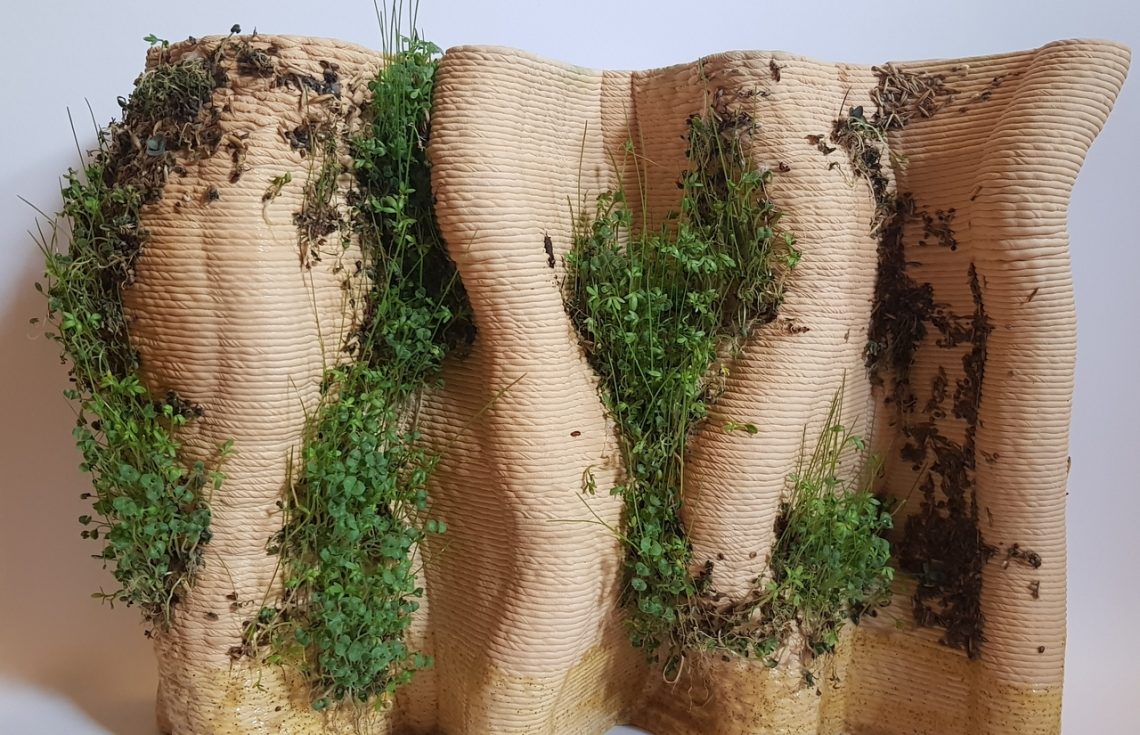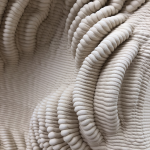
DIGITAL CREAMICS II. hosting a green community
E2 _ hosting a green community
Hosting a green community – is the umbrella term for novel 3D-printed facades. The greening of a dense urban space not only improves air quality but also regulates the urban climate and absorbs noise.
The complex structure (multi-layering, material mix) of a green facade can be greatly simplified with the help of digital design and fabrication.
“Hosting a Green Community” is a visionary STUDIO addressing several of the United Nations’ Sustainable Development Goals (SDGs). The project focuses on the integration of green spaces into dense urban areas through the use of 3D-printed facades. The greening of urban spaces has various benefits, including improving air quality, regulating the local climate, and reducing noise pollution.
The complex structure of a green facade, with its multi-layered material mix, can be significantly simplified through digital design and fabrication. Digitally designed ceramic facades can provide a host environment for a wide variety of plants, creating orientation and porosity that allow for water absorption and conductivity. The requirements for these components include frost resistance, open-pored surfaces to support roots and climbing plants, and water conductivity to promote plant growth.
This project addresses SDG 3: Good Health and Well-being by improving air quality and regulating the local climate and SDG 11: Sustainable Cities and Communities by bringing green spaces into densely populated urban areas. Additionally, ceramic materials provide frost resistance and durability, supporting SDG 9: Industry, Innovation and Infrastructure. Furthermore, the digital design process allows for a high level of customization and flexibility, enabling architects and designers to create unique and visually appealing green facades that meet specific functional and aesthetic requirements, supporting SDG 11: Sustainable Cities and Communities and SDG 17: Partnerships for the Goals.
The “Hosting a Green Community” project also represents a significant step towards the circular economy, an essential aspect of SDG 12: Responsible Consumption and Production. The modular nature of the 3D-printed ceramic facades, and their ability to host a wide range of plants, enables them to be reused and repurposed in future building projects. Furthermore, digital design and fabrication reduce waste and the carbon footprint associated with traditional building methods, further supporting SDG 12.
“Hosting a Green Community” represents a major step forward in addressing multiple SDGs, including Good Health and Well-being, Sustainable Cities and Communities, Industry, Innovation and Infrastructure, Responsible Consumption and Production, and Partnerships for the Goals. By leveraging the capabilities of digital design and fabrication, this project provides a sustainable, functional, and visually appealing solution for improving the urban environment and supports the global goal of sustainable development.
University of Innsbruck
department of architecture
exparch.hochbau
Studio Colletti
Lecturer: Jan Contala, Philipp Schwaderer
year : 2022









